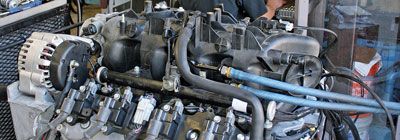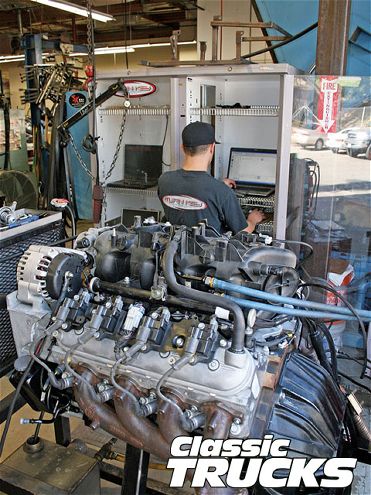

The past couple of show seasons we've noticed more than a few classic trucks with a late-model Chevy 5.3L LS engines between the fenders, which got us talking with their owners about the switch to a modern injected powerplant. Every one of them had literally nothing but good things to say about the swap and praised the increased mileage and reliability they received. Like some of you reading this, I'm still not quite up to speed with this whole fuel injection thing, but it is plain to see that it is a smart move-and the iron block 5.3L V-8 may be just what the doctor ordered for old Chevy trucks. Sure, there are bigger-displacement LS-series engines with trick aluminum blocks out there straight from the Motor City, but for those who simply want to drive their trucks, this "new" small-block is just the ticket.
While the LS engine is hardly new news, we classic truckers are a bit more resistant to change than, say, the street rod crowd. But we have our breaking point, which could be when money starts flying out of our back pocket at the pump. Even though gas prices have come down a bit as I type this, it is doubtful that that the issue will disappear, so onward we march-er, drive!
GM started pumping out the 5.3L (RPO LM7) in 1999 and continues production on the workhorse today. Subsequently, millions of these engines are easily obtainable in a junkyard near you. The base engine was rated at 285 horsepower and 325 lb-ft of torque and came in trucks, Suburbans, and vans; the lighter aluminum-block 5.3L was reserved for passenger cars. The LS family has proved without a doubt that it makes power easily should the want or need arise, but we'd settle for a gas-sipping stock version these days, with many reporting 20 to 25 mpg in their vintage trucks depending on the tranny and rearend combinations. Also, keep in mind these are a 100,000-mile tune-up engine that'll run like a charm for a long, long time if properly maintained.
It just so happens that I recently picked up an '01 iron block 5.3L from Dave's Goldenwest Truck wrecking yard in Westminster, California, with plans to put it in my '72 C-10 so I could actually afford to drive it again. Even with a 700-R4 and a 3.42:1 ring-and-pinion, the very tired, old, asthmatic Goodwrench 350 in the truck just wasn't cuttin' the mustard and was putting a serious squeeze on my wallet with its thirst for go juice. So I called the LS experts at Turn Key Engine Supply down the coast in Oceanside, California, and asked them what I had to do to accomplish this. There was obviously a lot of unnecessary late-model "stuff" on the motor I was pretty sure I didn't need. Next thing I knew I was on my way down there to have them walk me through it with my hopeful junkyard jewel.
Turn Key made a name for themselves in the off-road and sand car industries with their LS crate engines ranging from mild to twin-turbo wild. Naturally, they soon found themselves supplying many of the same packages to the classic car and truck market. Turn Key machines, balances, builds, and test runs all their engines right in their 15,000-square-foot shop and has developed a slick, simple engine control wiring harness that is the heart of all their powerplants. While the core of their business is the crate engines they build, they also sell each component individually, which is perfect for our low-buck junkyard adventure.
Well, let's take a look at what it takes to prep an existing 5.3L for the installation in the C-10 using Turn Key's parts and knowledge. Of course, if you want to just "turn the key" on a fresh motor, Turn Key can do that for you too-get it? Stay tuned for the actual engine installation and what's needed to get back on the road-21st century style!